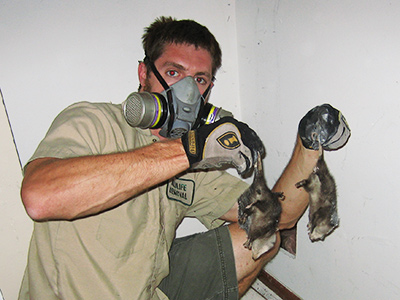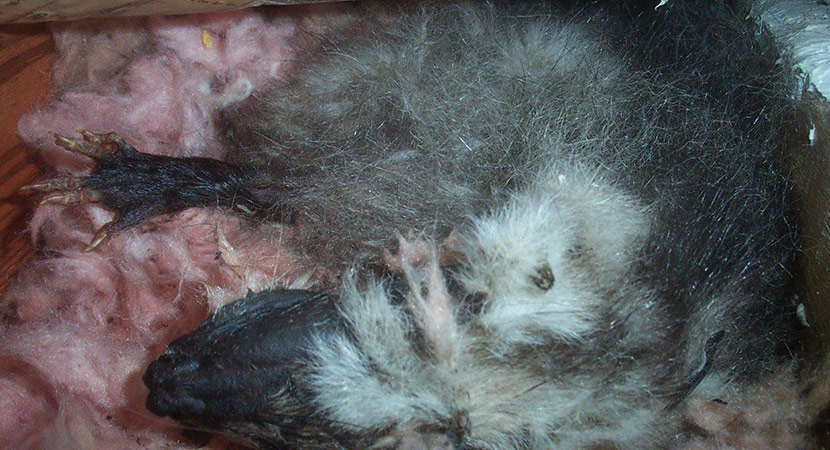Call me: 469-890-1653
Welcome to Dallas Dead Animal Removal! Got a terrible smell in your house, or do you see a dead critter on your property? We are an animal control company specializing in the removal of dead animals from your home, attic, basement, walls, yard, or any part of your property. You clearly don't want a dead animal in your house. Carcasses attract flies and give off terrible smells, not to mention the potential diseases rotting flesh can cause. Whenever we remove dead animals, we use 100% safe methods and make sure to disinfect your home and get rid of all traces of odor. Click here for Free Roadkill Removal and click here for Dead Pet Body Removal. For deceased wild animals in your home or property, call us anytime at 469-890-1653 to schedule an appointment for today! We come out fast! Some of the services we offer include:
- Dead Animal Removal
- Foul Odor Diagnosis
- Full Property Inspections
- House Damage Repairs
- Dead Body Location Services
- Proper Carcass Disposal
- Cleanup & Decontamination Services
- Deodorization Services
CALL US ANYTIME AT 469-890-1653

If you need wild animal removal, or dead animal removal in Dallas or elsewhere in Texas, you should give Dalls Dead Animal a call! We’re the experts in nuisance wildlife control, with a range of solutions to solve every problem, from dead rodents in wall cavities to live bats in the attic. Wild animal control is quite a tricky field, with lots of legalities and restrictions, especially with certain animals (such as bats and raccoons), and also when the critters are dead. They must be disposed of in a safe way that doesn’t risk spreading disease to other people or humans. We also feel that animals deserve respect, whether they are dead or alive, so we make sure that every approach we take is respectful and humane. We can service all types of property, including commercial properties. Our technicians carry full commercial liability insurance, as well as being highly-trained and well-equipped. They’ll have everything they need to get this job done right the first time, whether that’s state-of-the-art camera equipment or a snare pole. Any damage is repaired as we go about removing animals, including drywall that we may have had to cut out ourselves, to get to carcasses in cavities behind it. Repairs and restorations are completed to a professional-grade standard, so you won’t need to call in other contractors once we’re done. It’s a complete service – location, removal, trapping-and-removal, disposal, decontamination and sanitation, repairs and restorations, and even preventative measures to ensure problems do not reoccur.
What Prices Do We Charge?
Learn about dead animal removal costs - each situation is different!
What if you found roadkill or a dead animal such as a deer in a public place, and you want the city or Dallas County services to remove it for free? Click here for Free Dallas County Dead Animal Removal services. What if a farm animal like a horse, or your beloved pet dog or pet cat has died and you need the body taken away? Click here for Dead Pet Body Removal.
We are experts in dead animal removal, and take our job seriously. When removing dead animals, we do a COMPLETE job — not only do we remove the dead animal from your home or yard, we also decontaminate the area, deodorize it, and dispose of the animal or cremate it. If you aren't sure whether the stench in your house is due to a rotting carcass or another reason, we can sniff it out with our noses from our years of experience. We remove dead raccoons, dead opossums, dead skunks, dead squirrels, dead birds, even dead dogs and cats. We frequently remove dead rodents from inside walls, because poison kills rats and mice, who die in your house. We completely solve your dead animal problem by taking these steps:
- Sniff out the dead animal if it is somewhere in your home
- When necessary, for example if the animal is in a wall or under your house, cut a hole to remove the animal
- Remove the dead animal, safely and completely (and seal the hole if needed)
- Finish the job by decontaminating and deodorizing your home
- Properly dispose of the dead animal through incineration or other means
- Prevent it from happening again by finding out how they got in your house
Dead animal carcass removal is specialty work. Sometimes the job is simple, such as a dead opossum in the yard, in which case we can simply wear our gloves and respirator mask, bag the carcass, and take it away for incineration. Sometimes this is more complex, such as when the dead animal is under a home crawlspace, under a porch or deck or shed. Or if the animal is larger, such as a dog or a deer. The most complex cases are dead animals inside the house. The animal may have died inside the attic, or down in the walls, or the duct work, or any other part of the architecture. You may have a bad smell in your home, and you're not even sure what's causing it. We've removed not just dead animals, but rotting food, bad mold, etc. We specialize in locating the source of the smell, and we very commonly cut a hole in the ceiling or wall to remove the animal. We remove every bit of the carcass, mop up the juices, vacuum the maggots, spray it and wipe it down with disinfectant, cleaner, and we repair the hole we cut. In some cases we use ozone machines to neutralize odor.
Dallas Dead Animal Tip: Does a Dead Animal Carcass Cause Flies?

If you’ve found a dead animal in your home, you might be concerned about it attracting flies. After all, trash attracts flies; food attracts flies; surely a dead animal attracts flies too.
You’d be right.
Flies are scavengers that lay their eggs in animal flesh and animal waste. You’ll often find them buzzing around outside, but they’ll be at their highest concentration near a carcass. If you live near garbage bins, landfill sites, animal farms, or other similar locations, flies will be familiar. Nevertheless, they are likely hunting for a place to lay their eggs. Dead animal carcasses are a prime location. Once they’ve hatched from their eggs, maggots feed on the carcass for several weeks before they develop into full-grown flies. These flies then head off in search of a mate, and the cycle begins again
Types of flies
To the average person, a fly is a fly. What’s the difference? They all look pretty much alike. But if you’re forced to get a closer view, you’ll notice a wide variety of diversity. Some are blue or green, some have big bodies, while others are small. These changes are indicators of the species.
By knowing what to look for, flies can be a useful indicator for a dead animal somewhere on your property. You don’t want an animal rotting without your knowledge. So, read on.
House flies (Musca domestica) are the most common buzzing insect you’re likely to come across. They have broad bodies with sizable red compound eyes. Despite being common, they’re not often associated with dead meat. Instead, they prefer moist garbage or rotting plant matter.
Blowflies (Calliphoridae) are an indicator of dead animals. You’ll first notice their shiny metallic color, coming in copper, green, blue, or black. These flies are known to lay their eggs in dead animals and decaying meat or garbage.
Flesh flies (Sarcophagidae), as their name suggests, like flesh. Look for a gray body with black stripes running behind the head. Their lifecycle is similar to blowflies: eggs are laid in dead meat, then maggots feed on carcasses before turning into flies. You’ll most often see them lingering around garbage dumpsters or carcasses. They are the surest sign of a nearby dead animal.
Such species of fly will arrive within an hour or so following death. Therefore, if there are a substantial number of flies, you can be sure the animal died some time again. There’s a reason why forensics uses flies to identify how long a person has been dead.
How to prevent flies
The most obvious solution is to find and locate the dead animal carcass. Once located, place in several heavy-duty plastic bags and dispose of them according to your local area regulations. If you can, burial and burning are incredibly effective.
Next, scrub the affected area removing all remaining aspects of animal matter. Even a small amount of flesh might attract flies to the site due to the smell. Therefore, using enzyme cleaners and a strong disinfectant is essential.
If you are unable to remove the body from the area, then try to seal it up. Before doing so, inject disinfectants and deodorizers and consider treating it with an anti-fly/anti-pest compound as a precautionary measure. Once you’ve done so, regularly check up on the area and listen to ensure there are no flies inside. If you do find flies, ensure they are unable to leave after hatching.
Finding flies is often disgusting: we rightfully associated them with disease and death. However, they can be a vital clue to discovering a dead animal carcass hidden on your property. Flies, such as blowflies and flesh flies, lay their eggs in rotting flesh and hatched maggots then feed upon it. You can prevent fly infestations by finding and destroying the carcass. Then, ensure the area is scrubbed clean to remove any remnants of animal flesh. Otherwise, use anti-fly sprays and compounds to deter flies from nesting on a carcass and seal up the area affected. Flies will only persist as long as there is rotting flesh present.
We service nearby towns such as Irving, Garland, Highland Park, Addison, DeSoto, University Park, Farmers Branch, Duncanville, Lancaster, Balch Springs, Sunnyvale, Hutchins, Cockrell Hill, Wilmer,.